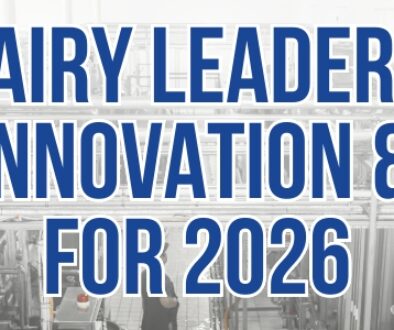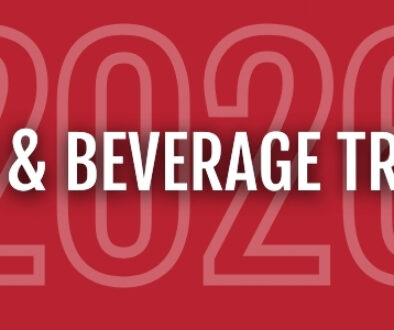Design Your Plant With Food Safety In Mind
Food & beverage processors need to ensure their facilities are built and maintained to support food safety rather than create added risk.
Designing a new manufacturing facility or renovating/expanding an existing one in most industries often causes an intense act of juggling the various requirements, regulations and financial restraints that impact the way the final result looks and operates. Multiple inputs and ideas are the rule, not the exception.
In the food & beverage industry, the same applies. However, the design of plants making products for human consumption must take into account an additional factor: food safety. Regulations help guide processors toward best practices to keep the product stream safe through proper facility design, but Adam Rosenberg, project manager, packaging engineer and junior partner for Dennis Group, explains that there is a balancing act that they need to master before foundations are laid and structures assembled.
“What drives decisions for the vast majority of companies and people is value,” he says. “You can build a pharma-grade facility, but that’s not going to be the right value if you’re making jams or coffee, for example — some level of focused design is required.”
The Covid-19 pandemic shifted the mindset of more processors toward the value of food-safe facility design, Rosenberg adds. Since then, more processors have gotten on board with the importance and value it brings, despite the impact on the bottom line.
“More companies are getting on board with understanding that defining food-safe design holistically as an organization is critical to the success of a growth strategy,” he explains. “And it’s much more critical than simply executing a project to build a nice plant.”
Some companies are taking cues from sanitary equipment design practices to improve their facilities, Rosenberg says, applying those principles to building elements in some instances.
Nevertheless, processors sometimes need to be shown the way and given more of a reason to commit to what they might view as an extra expense, says Pablo Coronel, senior fellow-food process & food safety for CRB Group.
“After so many years of GMPs and FSMA hammering on everybody, you would think they wouldn’t, but you still see people trying to take shortcuts on food-safe design,” he says, adding that even some plants built in the past five years lack basic design features that help with food safety, such as coved corners, properly sloped floors and harborage-free equipment footings.
But processors don’t always think about inaccessible corners or areas like curbs and floors, which product doesn’t touch, Rosenberg adds. “They’ll get a fancy, shiny piece of stainless-steel equipment and think that’s it, it’s food safe. But then they install it in a corner that can’t be cleaned or swept out easily because of the way they installed it; no one’s going to ever spend the time required to wash that area.”
And that type of oversight allows dirt, residue and tiny bacteria to accumulate — which will happen given the slightest opportunity, Coronel says, adding: “We need to have a second wave of training and hammering that into companies.”
Divide and Conquer
Separation of different zones in a plant determined by food safety risks — or “hygienic zones” — has become popular beyond plants in the meat & poultry industry, where separation of raw production from ready-to-eat has been common for a while now. Coronel says the practice has spread throughout the food & beverage industry.
“Even bakeries have the front end and the back end of the oven, with a wall to separate the areas handling cooked and non-cooked bread,” he says. “You’re also seeing a lot more of environmental monitoring and minimizing the risk for re-contamination of the product after the kill step.”
Because the industry handles such a wide variety of products and packaging formats, this approach cannot be generally applied, however. Risk to product safety should be assessed first. Even meat and poultry companies can drill down further and set up additional zones with varied food safety requirements (and thus, design elements) on the ready-to-eat (RTE) side as well, Rosenberg says.
“On the RTE side, the packaging operation still has product exposed to the environment, but then it’s in its primary packaging, reducing risk, then on a pallet,” he explains. “Hygienic zoning considers high-risk, medium-risk, low-risk areas of the plant, so you wouldn’t need a stainless-steel support in a warehouse, for example, because it would be a separate zone from the food safety risks in the zones before it.”
Keeping incoming materials segregated also comes into play when designing facilities. Furthermore, it does little good to create hygienic zones and not pay sharp attention to setting up air-handling systems that serve only that zone. Contaminants can be carried through the air, and mixing air from different zones can create greater risk to food safety. These two factors come into play particularly when processors have to work with allergens.
“We think of air as something that goes in the food, so air has to be very clean when it gets in touch with the finished product,” Coronel says. “If you have an area where you have allergens, you have to have different air-handling units so that you don’t contaminate one with the other.”
Playing Defense
Food defense continues to emerge as an extended concern when it comes to the safety of the food supply for processors and regulators alike. Coronel says food defense concerns are starting to drive facility design decisions for many.
“Before, food plants we’re pretty much open, on the edge of the road, with no fences, so anybody could basically have access,” he says. “Now they’re trying to build them a lot more securely to prevent access to anybody who doesn’t belong there.”
Rosenberg, too, has seen the mentality change across the industry, with processors limiting and monitoring access to facilities. Beyond adding fencing to a property, companies that have people sign in and out of a facility is also “just a good practice to implement for health and safety, record-keeping and documentation purposes.” Many of the changes try to anticipate and prevent incidents (accidental or not) from occurring, he says.
“You might have a hatch on a silo for a ready-to-eat product that used to simply have to be closed, but now you have a food-defense requirement that says it must be locked and have controlled access, because someone might open the hatch to look inside and something might fall out of their pocket into the product,” he says. “And that’s not even a high-risk food product.”
Technology and automation also have driven a different type of requirement to handle cybersecurity demands. Rosenberg says protecting the plant’s network has become critical to protecting the safety of the food supply, and companies are starting to develop plans that work within those parameters.
“With automation, one of the challenges is the increased risk that somebody will get into your system and take control of your robot,” he says. “It’s a whole new realm of possibilities and challenges.”
Keep Up To Date On Cheese Industry News
Find all of HART Design & Manufacturing’s current industry news here.
Source: Food Processing




